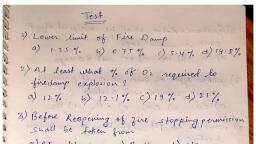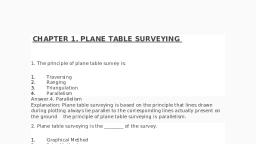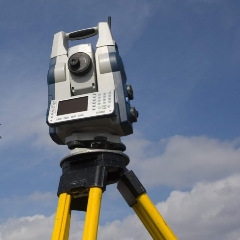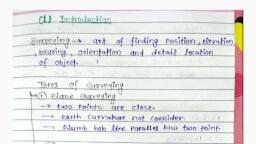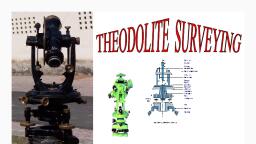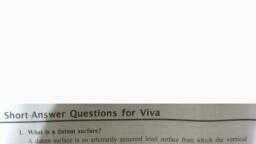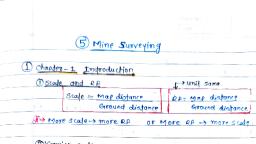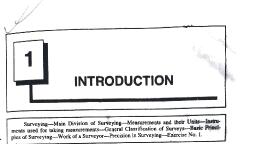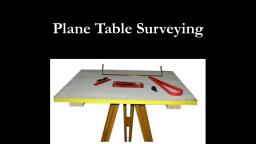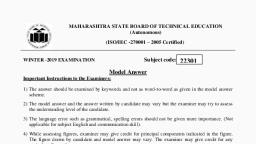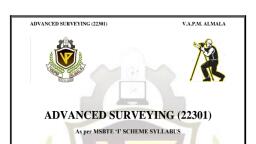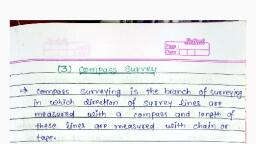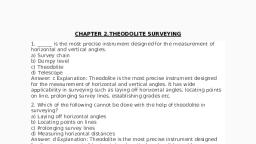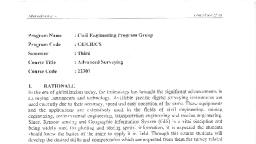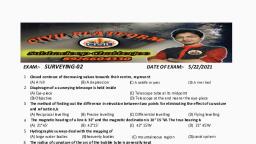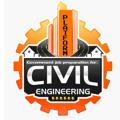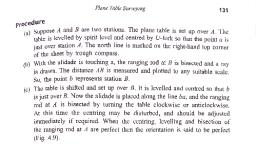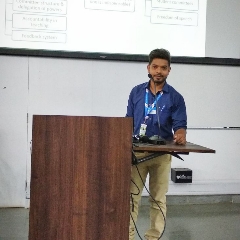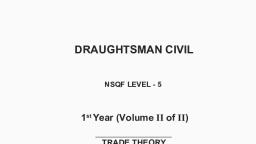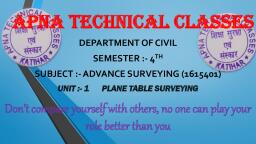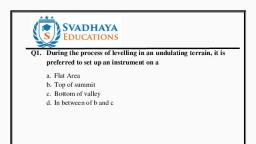Page 2 :
1. Introduction, , 11, 1.2, 13, 14, AS, L6, 1.7, 1.8, 1.9, , 1.10 . Testing a Chain 9 s =, 111, 1.12, 1.13, 114, Lis, 1.16, 1.17, 1.18, , 1.19, , Contents, , 2, , <, Definition 1, , Object of Surveying / wi ©, Uses of Surveying / . :, Classification of Surveying 2 ~ . ., General Principle of Surveying. 3... :, Methods of Linear'Measurement.. 3: woe og at, , o. Accés§ories for Linear. Measureménts -4 Bh., Ranging, 7 * : . Ae, é, , Unfolding and Folding a. Chain 9, , Adjustmgat of Chair 19. ‘ . : ., , Degree of Accuracy in Chaining 10 e ., , Leader and Follower 17, , Method of Chaining on Level Ground // «Mee a, , Method of Chaining on Sloping Ground 7/, , Obstacle in Chaining. 14 . ~, , Conception 6f Magnetic Bearing _18, , To Find the Height of an Object by Using only Tape, « -atid Ranging Rods “19 ., , Errors and Mistakes in®Chaining 19, , 2, , 1.20. Precautions Against Errors and Mistakes 2/, , 1.21 Chain and Tape Corrections. 27 EB, 1.22 Worked out Problems on Chain and Tape Corrections 24, 1.23 Problems on Obstacles in‘Chaining 32, , 1.24 Problems Related to Sloping Ground 37 a 2 °, 1.25 To Verify whither a Triangle is Well-Conditioned 40, , 1.26 Problems on Scales 4/, , 1.27 Conversion Table for Important Units 44. ?, , Short Questions for Viva 45, , Exercises 46 . at, , Answers 48 5 an wg, , ° c, , °, , Chain Surveying 8 49, 2.1 Principle of Chain Surveying 49 °, 2.2 Well-Conditioned and Il-Conditioned Triangles 50, 2.3 Reconnaissance Survey and Index Sketch 50 A, , 2.4, , Definitions and Illustrations 51
Page 3 :
x Contents, 2.5 Selection of Survey Stations 57, 2.6 Equipments for Chain Survey 58, 27 The Field Book 58, 28 Procedure of Field Work 62, 2.9 Conventional Symbols 63, « 2.10 Equipments:for Plotting 66, 2.11 Procedure of Plotting 67, 2.12. Cross-staff and Optical Square 68, Short Questions with Answers for Viva 70, Exercises 71, Ansivers 73 ., 3. Compass Traversing eek = ., , ST nan Purpose” 74 *, , 3:2" Definisions 74 _ « es So ©, 3.3 Principle of Cothpass Surveying .79, , 3.4 Traversing 79°" kor era, , .3.5 | Methods of Traversing CO: esarpanis! ti ‘, , . © 3.6... Check on Closed Trayerse 67... ‘ ., 3.7 «Check on Open Traverse 82° ° a ft, 3.8 Types of Compass 82 ., , 3.9 Temporary Adjustment of Prismatic Compass (Field, Procedure of Observing Beating) 84° ¢, , 3.10 “Problems on Whole Circle Bearing ahd, §, , ‘ Quadgantal Bearing’ 85 :, , 3.11 Problems ‘on Fore atid Back Bearings, 85, , 3.12 Problems on Magnetic Declination 87, , 3.13 Problems on Included Angle 88, , 3.14 Problefas on Local Attraction 95, , 3.15 Field Procedure of Compass Traversing 106, , 3.16 Plotting. of Compas$ Traverse 107., , 3.17 Adjustment of Closing Error 409, , 3.18 . Sources of Error in Compass 1/0 «, , 3.19 Precautions to be Taken in.Compass Surveying 1/1, , © Short Questions with Answers for Viva 1d, Exercises 112, Answers 114 “8, 4, Plane Table Surveying “, , 4.1 Principle 115 s, , 4.2 _ Accesseries of Plane Table 115, , 43 Orientation 1/8, , 44 Procedure of Setting up Plane Table over a Station 119, , 4.5 Methods of Plane.Tabling 120, , 4.6 Special Methods of-Resection 123, , 4.7, , Errors and Precautions 126, , eniateaca meta AeA AE, , , , , , , , , , , , Contents xt, 48 Procedure of Plane Table Traversing 128, 49 Advantages and Disadvantages of Plane Tabling 129, Short Questions with Answers for Viva 129, Exercises 130, Answers 13 #, Levelling 132, 5.1 Object and Use of Levelling 132 ., S52 Definitions 132, 5.3 Different Types of Levels 136, 54. Temporary Adjustment of Level 142, 5.5 Types of Levelling Operation . 143 <, 5:6 Principle of Equalising Backsight and Foresight, Distances 146 : _, Sut Corrections to be Applied» 747~, 5.8 “ Problems on Corrections and Sensitiveness 151], 5.9 Reciprocal Levelling I5S: x ‘ ‘, 5:10 «Problems on Reciprocal Levelling 56 «, 5.11 Methods of Calculation of Reduced Level 159, 5.12 Points to be Remembered while Entering the Level, « Book /61 ‘ % «, 5.13 Problems oa Reducticn of Levels 163, 5.14 Project Work (Roads, Railways, etc.) 170 ‘, 5.15 Difficulties Faced in Levelling 177, 5.16 Sources of Error in Levelling 179 é, 5.17 Permissible Error in Levelling ./80, 5.18 Determination of Stadia Constant 180:, 519 Determining Distance by Stadia Method 182, 5.20 Permanent Adjustment of Level 183, 5.21. Problems on Permanent Adjustment 185, Short Questions with Answers for Viva 188 ©, Exercises 190, Answers . 192, 4 °, Contonring . f93, 6.1 Definitions 193, 6.2 Object of Preparing Contour Map 194 ©, 63 ‘Uses of Contour Map. 194 é, 64 Characteristics of Contours 194 *, 6.5 Methods of Contouring 195, 6.6 Method of Interpolation of Contours 200 ., 6.7 Contour Gradient 202, 68 Field Location of Grade Contour 202, , Short Questions with Answers far Viva 204, Exercises 204 e, Answers 205
Page 4 :
xii Contents, 7. Computation of Area 206, 7A Introduction 206, aS Computation of Area from Field Notes 206 ., 7.3 Problems on Computing Area from ield Notes 207, 74 Computation of Area from Plotted Plan 210, 7.5 © The Mid-Ordinate Rule 2/7, 7.6 The Average-Ordinate Rule 2/2, “7.7 The Trapezoidal Rule 2/2, 7.8 Simpson's Rule 273, 19 Worked-out Problems *, 7.10 Coordinate Method of 218 ar, 7.11 . Instrumental Method, 7.12 Worked-out Problems 225 ot lf, “Short Questions with Answers for Viva ‘228, Exercises 229 «, <1 Answers 230 ant ., > ¢, 8 Computation of Volume. a8 234, 8.1 Introduction 237 “ ee, ° 8.2 Formulae for Calculation of Cross-Sectional Area’ 23] ., . 8.3 Formula for Calculation‘of Volume 240, 8.4 Prismoidal Correction for Trapezoidal or Average, £ End Area Rule 24] « «, 8.5 < Worked-out-Problems 24/ ‘, . Short Questions with Answers for Viva 253, s Exercises .,.253° ,, © Answers 256 =, 9. Theodolite Traversing 257, 9.4 Introduction 257, ae. Definition 257, 9.3 The Transit Theodolite 260 a ., 9.4, Reading the Vernier Theodolite 263 " ., 9.5, "Reading the Micrometer Theodolite 264, 9.6 Temporary Adjustment of Theodolite 264, 9.7 Some Modern Theodolites 266, 9.8 Direct Method of Measuring Horizontal Angle 268, 9.9 Measuring Vertical Angle 273 ‘, 9.10 Measurement of Deflection Angle 275, 9.11 Measurement of Magnetic Bearing 277 ,, 9.12 Measuring Horizontal Distance by Stadia Method 278, 9.13 Ranging and Extending a Line 278, 9.14 Methods of Traversing 279, 9.15 Check in Closed and Open Traverse 282, 9.16 Sources of Error in Theodolite 283, , , , , , 3 cotta ctahatunnemcirsteats, , ERRORS Nas, , , , reer, , ASP eR, , , , |, , REESE an cere NORE a ste, , , , , , Contents xiii, , , , 9.17 Closing Error and Its Limitation 284, 9.18 Computation of Latitude and Departure 285, 9.19 Balancing of Traverse 287, 9.20 Calculation of Traverse Area 29] ?, . 9.21 Procedure for Traverse Survey with Theodolite 296, 9.22 Worked-out Problems on Latitude and Departure, with « °, Incemplete Data, 302, 9.23 Permanent Adjustment of Theodolite 3/4, 9.24 Trigonometrical Levelling to Find Heights of, ’ Objects 3/7, Short Questions with Answers for Viva 319 :, Exercises 321, ‘ Answers 323 é <, © 19. Curves ans . s 324°, ee é ., 10.1 Introduction 324 of Sect ee i, “10.2 Definitions’ and Explanations of Different Terms, 325 ., e 10.3 Types of Horizontal Curves 326 ° Bt ., = 10. Notation Used with Circular-Curves 328, 10.5 Properties of Simple Circular Curve 329 «, ar 10.6 Horizontal Curve-Setting by. Chain-and-Tape Method . 330, i <10.7 Instrumental Method—-Horizontal Curve’ Setting by, oe “ Deflection Angle Methéd or Rankine}s Method’ 340,, os 10.8 Compound Curve—Calculation of Data and Setting Out 345, ¢ 10.9 Reverse Curve—Calculation of Data and’ Setting Out 349, 10.10 Transition Curve—Calculation and Setting Out. 356 ., 10.11 Vertical Curves 370 . ., * 10.12 Problems Faced in-Curve Setting 375, 10.13 Worked out Problems on Horizontal Curves 379, 10.14 Worked out Problems on Vertical Curves 39/ ., Short Questions with Answers for Viva’ 395 & “8, Exercises? 398 ., Answers 400 :, , li, Tacheometric Surveying, , 111, 11.2, 11,3, 114, 115, 14.6, 11.7, , 118, © 8 Ah, , ene ce AO Ma a, , ., , . 401, , Introduction 401, , Theory of Stadia Tatheometry 402 é, Determination of Tacheometric or Stadia Constant 404, Anallatic Lens—Object and Theory 406, , Methods of Tacheometry 408, , Fixed Hair Method 409 c, , Worked-out Problems on Fixed Hair Method of, Tacheometry 412, , The Moveable Hair Method. 42/, , The Tangential Method of Tacheometry 423
Page 5 :
xiv Contents, , 11.10 Reduction of Readings 427 ©, , 11.11 Direct Reading or Autoreduction Tachcometer 430, , 11.12 Measurement of Horizontal Distance by Subtensé, Bar 431 ., , 11.13 Field Work.in Tacheometry 432, , 11.14 Errors and Precisions ‘in Stadia Tacheometry ‘ 434, Short Questions with Answers for Viva 435, , # Exercises 436, , Answers 438, , 12. Project Surveys ., , 12.1» Introdyction | 439, tign'of Mas§:Riagram _ 440..., 2.3 ~’Rai'way-Project Survey ° 447, - 12.4 - Road" Projécts “' 446., - 12.5 ~ Project Survey ‘on Flow Intigation © 449, 12.6 Project ‘Survey on WatesSupply Scheme 453, x, 12.7 Project Survey on Sanitary Scheme 455... 5 <,, 12.8. Project:Survey on Docks, Harbours and Ports 4570, 12.9 Project Survey’on Airport 460, 12.10: Tunnelling 462, 12.11 Topographic Survey "465 : °, 12.12 Project on Township-or City Surveying 468, , , , , , , , , , 13, Hydrographic Survey . . 5, 13.1 Introduction 472, 13.2 Rain Gauging 472 e, 13.3. River Gauging 473, 13.4 Marine Survey 481, , 14.. Setting Out Works, , 14.1° Setting out a Building 482 °, 14.2 Setting out a Culvert 483, 143 Locationof Bridge Pier 484, , 15. Model Questions with Answers, , Appendix A, Appendix B yo ‘, Appendix C 5 ‘, ‘Appendix D, , Index, , 439, , 486, , 493, 511, 526, 541, , 545, , , , , , , , , , , , “|, Introduction, , 1.1 DEFINITIONS, , “arveying is the art Of deterthining the relative fe posittdns of different objects oi on, the. surface of the. earth by measuring t the-horizontat distances between them, and, by preparing a map to any suitable scale. Thus, in this discipline, the measurements, , ° are taken only in the horizontal planc. es, , Levelling is the art of determining the. relaive vertical distances of different points, |, , on the surface of the earth. Therefore, in levelling... the measurements are taken, only in the, vertical plane., , 1.2 OBJECT OF SURVEYING, , The aim of surveying is to prepare a map to show the relative positions of the, objects on the surface of the earth. The map is drawn to some suitable scale. It, shows the natural features of a country, such as towns, viliages, roads, railways,, rivers, etc. Maps may also include cetails of different engineering works, such as, roads, railways, irrigation canals, etc., , 1.3° USES OF SURVEYING, , Surveying may be used for the following various applications., , 1. To prepare a topographical map which stiows the hills, valleys, rivers, villages, towns, forests, etc. of a courtry. ©, , 2. To prepare a cadastral map showing the boundaries of fields, houses and, other properties., , 3. To prepare an engineering map which shows the details ‘of enginecring, works such as roads, railways, reservoirs, irfigation canals, etc:, , 4. To prepare a military map-showing the,road and railway ‘communications, , . with different parts of a country. Such a map also shows’ the different strategic, , points important for the defence of a country., 5. To prepare a contour map to determine the ¢apacity of a reservoir and to, find the best possible route for roads, railways, etc., 6. To prepare a geological map showing areas including underground resources., 7. To prepare an archeological map including places where ancient relics exist., , ©



